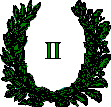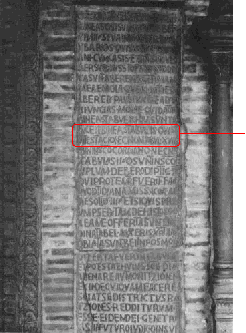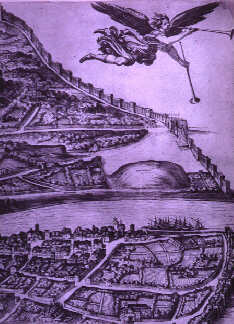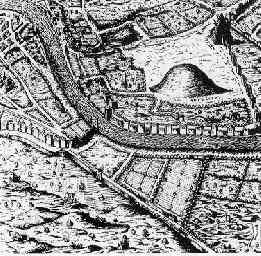 |
The Amphorae Mount: Mith and Reality |
 |
The Amphorae Mount: Mith and Reality |
Mount Testaccio was forged between the Ist and IIIrd century A.D., but there are written evidences about its early days, so it is impossible to record any mention about it over centuries.
The oldest new about the Mount occurs on a VIIIth century inscription from the portico of St. Mary at the Cosmedin church, which concerns about the property of the deaconry and reads as follows:
 |
"bineas
tabul(arum duarum et semis) qui sunt in Testacio"
Inscription
from the Portico of Sta. MĒ in Cosmedin. (Roma).
|
There have been numerous hypothesis about how the Mount Testaccio was formed as well as some myths, devised by popular imagination: a heap of rubble coming from Nero’s f ire; a warestore of commodities; containers of funerary urns from the colombaria of Via Ostiense...
The most elaborated theory defended that Mount Testaccio was built up with the sherds of overseas amphoras brought to Rome to pay the provincial taxes, as Arthur Graf rephrased on the Imperial Book in 1882:
 The Mount Testaccio in a map of Rome of A. Tempesta (1593). |
"Taxes arrived at Rome in ceramic vessels painted with a myriad of colours. They were still remembered by the Roman people, because when the tax was in Rome the vessels were emptied and broken in a place that looks like a enormous hill... where Remus' grave stands..." |
 Ancient etching of the Mount Testaccio with Via Crucis. |
In the Middle Ages and later on, the
Mount Testaccio was the favourite venue for violent
carnival-like rites, vintage festivals and religious
ceremonies. For instance, the Calvary and its Via Crucis was help on its slopes. The last relic of this Via Crucis is the cross located on the top of the hill. |
Mount Testaccio was also used as a quarry for works to refurnish nearby streets; cellars were also dug inside the mount because of the constant and suitable temperature.
Municipal decree of 1744 renewing
the prohibition (of 1742) of grazing and
taking material from the Testaccio..The Mount Testaccio in a map
of Rome made by de Paoli (1623).
